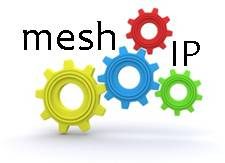 Enterprise-level business and IT executives and decision-makers may now have a greater understanding of the benefits of private and hybrid cloud computing environments, but a new study has found that there is still a large gap between expectations and the reality of what cloud computing and virtualization offer.
Enterprise-level business and IT executives and decision-makers may now have a greater understanding of the benefits of private and hybrid cloud computing environments, but a new study has found that there is still a large gap between expectations and the reality of what cloud computing and virtualization offer.
Symantec’s “2011 Virtualization and Journey to the Cloud Survey” surveyed 3,700 executives and decision-makers from 35 countries about their perspectives on the adoption and deployment of private and hybrid clouds, as well as virtualized technologies. Symantec found there are different approaches being taken with cloud computing, but perhaps the most troubling finding of the survey is the gap between the expectations of what cloud delivers and what, in reality, it actually provides.
“There’s a lot of understanding. There’s also a lot of misunderstanding on what private and hybrid clouds can do in an environment,” said Sean Derrington, director of cloud product management at Symantec.
Perhaps not unexpected, IT executives and business executives were out of sync in what they were looking for from cloud computing, and the gap between expectation and realization was also different.
“We’re also seeing a lot of companies increasing the deployment of business-critical applications in these private and hybrid clouds, much more so than before,” Derrington said. “I think it’s one of the early signs of maturity, but it’s also to keep in mind that as companies look to deploy cloud applications, they have to [attain] quality of service.” They need to get the same quality of service in private and hybrid clouds that they’re getting in traditional IT environments, he added.
Quality of service is proving to be a challenge, and it’s become a top priority among enterprises. When asked about virtualization and cloud technologies, 76 percent of respondents who have implemented server virtualization said performance was a somewhat or extremely large factor in making people concerned about placing business-critical applications on virtualized servers. Of those who have implemented private or hybrid clouds, 72 percent said performance was a significant or extreme challenge, so there are still a lot of wrinkles to iron out before enterprises are completely happy with private and hybrid clouds.
The Symantec survey asked IT and business executives about their adoption of storage virtualization, desktop/endpoint virtualization, server virtualization, private storage-as-a-service, and private/hybrid cloud computing. Unsurprisingly, the smallest gap between expectation and realization was with the most mature technology – that being server virtualization, with a 4 percent gap between goals and reality. All of the other technologies were well into the double-digits between expectation and reality, with storage virtualization at 33 percent, desktop/endpoint virtualization at 26 percent, private storage-as-a-service at 37%, and private/hybrid cloud computing at 32 percent.
What’s the lesson to be learned? Simple. There is still a lot of confusion around what virtualization and cloud computing can actually provide to organizations in terms of benefits. The expectations of benefits pre-deployment are much different than what is actually being realized post-deployment. Derrington noted that some of the problem is that if businesses don’t deploy virtualization and cloud computing technologies correctly, then the benefits people are expecting won’t be fully realized. He said he believes there is a lot of over-selling on what the technologies can do.
Part of the problem that still exists is in evolving the way IT organizations function, Derrington said. To get the full benefits of virtualization and cloud computing, it’s necessary to remove the silos of administration found in traditional IT infrastructures. If that’s not done, then the full benefits can’t be gained.
“There’s a lot of process that has to happen to take advantage of some of these new technologies,” Derrington said.
Additionally, some people are confused about what private cloud computing is. As Derrington noted, it’s more than simply deploying a VMware-based environment.
“Private clouds really are about looking at virtualizing the resources of storage and server, looking at resource utilization, and having a dynamic environment that can be elastic as you scale and contract resources on an as-needed basis,” Derrington said.
It’s likely the gaps between expectation and reality will begin to shrink in the coming years. Symantec plans to survey companies on this topic again next year, so it should be interesting to see what has changed at that time.
Derrington noted there is much interest in cloud among enterprises, and most enterprises surveyed are, at the very least, discussing cloud adoption. There is still some confusion about what private and hybrid clouds are, but that’s more on the business side rather than the IT side.
“I think in enterprise there is more of an understanding of what cloud is and its capabilities, but there is still a little bit of a disconnect,” he said.
There is also an increasing focus among enterprises when it comes to virtualization and cloud technologies. Some are even going beyond deploying business-critical applications in virtualized or cloud environments and starting to discuss moving mission-critical applications over to virtual servers and the cloud.
“I personally wasn’t expecting 41 percent of respondents looking to virtualize ERP applications,” Derrington said.
As he noted, putting financials, human resources or any other mission-critical applications in virtual environments is betting the business on that environment. CIOs are more open to the idea of moving mission-critical applications to the cloud or virtual environments, whereas CEOs and CFOs are much more risk-averse. Business leaders, as opposed to IT leaders, tend to want to be a little behind the technology curve instead of leading it, Derrington said.
Many enterprises are relying on third-party service providers for their cloud and virtualization needs.
“They’re relying more heavily on outside providers,” Derrington said. At least 50 percent of respondents rely quite a bit or completely on outside service providers, whether those providers are vendors, resellers or managed service providers.
Based on the survey results, Symantec had a few recommendations for businesses.
“One of the things that we’re recommending is you really have to focus on the line between the IT organization and the executives,” Derrington said. Appropriate expectations about the technologies must be set to avoid the gap in expectations and reality.
Also, old-school IT thinking has to be abandoned. Operating in a silo won’t allow enterprises to get the benefits of virtualized and cloud environments. As companies modernize their infrastructure, they need to modernize their IT departments.
One last recommendation from Symantec is to track results.
“This is one of the things that proves success to upper management and executives in the company,” Derrington said.
Overall, things are looking good for the virtualization and private/hybrid cloud arenas.
“This is one of the areas where a lot of companies are aggressively looking. They think they can improve the way that they run their businesses, and one of the things that we saw is we need to raise some caution in making sure they’re doing it appropriately and not trying to overachieve and failing to meet those expectations, which then leads to other problems, too. But overall, very positive,” Derrington said about the survey results.
- The Customer Edge Drives the Need for NaaS - June 25, 2023
- Blockchain Evolves And Secures - January 13, 2019
- Bessemer Ventures’ 2018 Cloud Computing Trends - February 25, 2018




